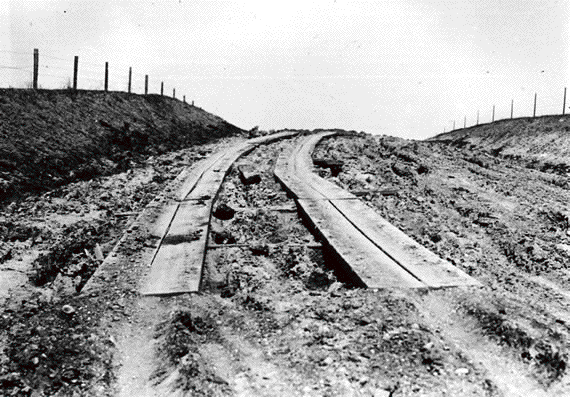Encyclopedia Dubuque
"Encyclopedia Dubuque is the online authority for all things Dubuque, written by the people who know the city best.”
Marshall Cohen—researcher and producer, CNN
Affiliated with the Local History Network of the State Historical Society of Iowa, and the Iowa Museum Association.
PLANK ROAD: Difference between revisions
No edit summary |
No edit summary |
||
| Line 1: | Line 1: | ||
[[Image:plankroad.gif|left|thumb|150px|Plank roads offered serious challenges to transportation.]]PLANK ROAD. Unique form of road construction with timbers and planks first used in the United States in 1845. In September, 1851 the Dubuque and Sageville Plank Road Company, whose officers included [[FARLEY, Jesse P.|Jesse P. FARLEY]] | [[Image:plankroad.gif|left|thumb|150px|Plank roads offered serious challenges to transportation.]]PLANK ROAD. Unique form of road construction with timbers and planks first used in the United States in 1845. In September, 1851 the Dubuque and Sageville Plank Road Company, whose officers included [[FARLEY, Jesse P.|Jesse P. FARLEY]], [[SMITH, Platt|Platt SMITH]], L. Maloney, H.. Thompson, and J. J. Dyer, began construction of a road between Dubuque and Sageville along the present route of Central Avenue north of Diagonal Street. Three-inch oak plank were used. (1) The cost was $3,175 per mile. Joseph C. Jennings was the construction engineer. | ||
The company was granted permission on September 15, 1852, to begin collecting tolls. A one-horse vehicle was charged five cents; each led to loose horse, two and one-half cents; and horned cattle, sheep, and hogs were one cent each. (2) The tolls allowed persons to pass over the road and return the same or next day. | The company was granted permission on September 15, 1852, to begin collecting tolls. A one-horse vehicle was charged five cents; each led to loose horse, two and one-half cents; and horned cattle, sheep, and hogs were one cent each. (2) The tolls allowed persons to pass over the road and return the same or next day. | ||
Revision as of 04:53, 22 December 2012
PLANK ROAD. Unique form of road construction with timbers and planks first used in the United States in 1845. In September, 1851 the Dubuque and Sageville Plank Road Company, whose officers included Jesse P. FARLEY, Platt SMITH, L. Maloney, H.. Thompson, and J. J. Dyer, began construction of a road between Dubuque and Sageville along the present route of Central Avenue north of Diagonal Street. Three-inch oak plank were used. (1) The cost was $3,175 per mile. Joseph C. Jennings was the construction engineer.
The company was granted permission on September 15, 1852, to begin collecting tolls. A one-horse vehicle was charged five cents; each led to loose horse, two and one-half cents; and horned cattle, sheep, and hogs were one cent each. (2) The tolls allowed persons to pass over the road and return the same or next day.
The road was still in existence in 1854. An A. Leather advertised an omnibus 'between Waples House and Davis' farm on the Plank Road" at a cost of five cents each way. (3) On August 8, 1854, a committee was appointed to negotiate with the company for the purchase of the road within the city for $2063.10. Various repairs to the road were made until April 1, 1875, when a resolution was passed to tear up the planks, by then considered an obsolete form of road construction.
The Dubuque and Maquoketa plank road was projected in 1851, but failed to progress. It was the original intention to lay the planks as far as Table Mound before winter set in.
---
Source:
1. Klein, Robert F. Dubuque: Frontier River City. Research Center for Dubuque Area History, Loras College, Dubuque, Iowa, 1984, p. 123
2. Ibid.
3. Ibid.
Oldt, Franklin T. History of Dubuque County. http://www.ebooksread.com/authors-eng/franklin-t-oldt/history-of-dubuque-county-iowa-being-a-general-survey-of-dubuque-county-histor-tdl/page-10-history-of-dubuque-county-iowa-being-a-general-survey-of-dubuque-county-histor-tdl.shtml
(Photo Courtesy: Iowa Department of Transportation)


